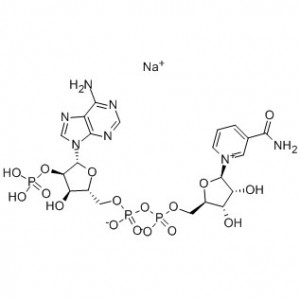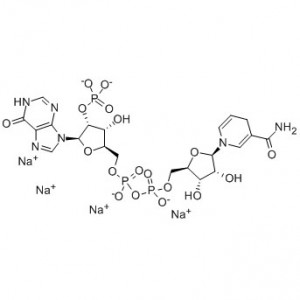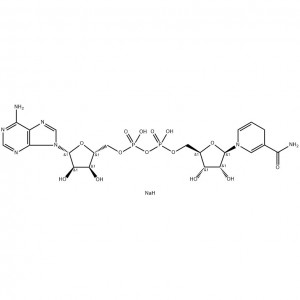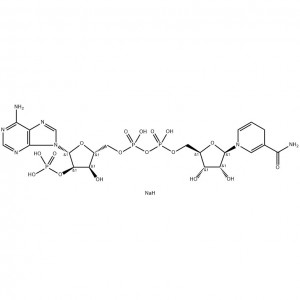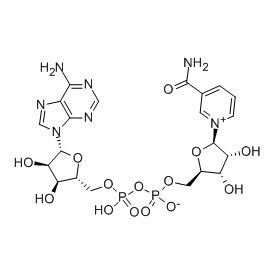β-Nicotinamide adenine dinucleotide phosphate, oxidized form, monosodium salt (Reagent Grade II) (NADP ▪NA)
SyncoZymes (Shanghai) Co., Ltd. is the leading manufacturer and supplier of β-Nicotinamide adenine dinucleotide phosphate, oxidized form, monosodium salt (Reagent Grade II) (CAS: 1184-16-3) with high quality. We can provide COA, worldwide delivery, small and bulk quantities available. If you are interested in this product, please send detailed information includes CAS number, product name, quantity to us. Please contact: lchen@syncozymes.com
| Chemical Name | β-Nicotinamide adenine dinucleotide phosphate, oxidized form, monosodium salt |
| Synonyms | β-Nicotinamide adenine dinucleotide phosphate, oxidized form, monosodium salt (Reagent Grade II) |
| CAS Number | 1184-16-3 |
| Molecular Weight | 765.39 |
| Molecular Formula | C21H27N7NaO17P3 |
| EINECS号: | 214-664-6 |
| Melting point | 175-178 °C (dec.)(lit.) |
| storage temp. | -20°C |
| solubility | H2O: 50 mg/mL |
| form | powder |
| color | off-white to yellow |
| Water Solubility | Soluble in water. |
| Merck | 14,6344 |
| BRN | 4779954 |
| InChIKey | JNUMDLCHLVUHFS-QYZPTAICSA-M |
| Test Item | Specifications |
| Appearance | White to yellow powder |
| Solubility | 200mg/ml in water |
| pH value (100mg/ml) | 3.0~5.0 |
| UV Spectral Analysis εat 260 nm and pH 7.5 |
(18±1.0)×10³L/mol/cm |
| Content (by enzymatic analysis with G6PDH at pH 7.5, using spectrophotometer, abs.340nm, on anhydrous basis) | ≥93.0% |
| Purity (by HPLC, %area) | ≥97.0% |
| Water content (by KF) | ≤5% |
Package: Bottle, Aluminum foil bag, 25kg/Cardboard Drum, or according to customer's requirement.
Storage Condition: Keep tightly stoppered in dark, for prolonged storage keep at 2~8℃.
NADP, a coenzyme, is a substance that nicotinamide adenine dinucleotide is bound to a phosphoric acid molecule by ester bond, and widely exists in the biological world. Its chemical properties, absorption spectrum and redox form are similar to NAD (coenzyme I). NADP can be widely used in various reactions catalyzed by oxidoreductases such as alcohol dehydrogenase and ketoreductase. For example, it can be reduced to NADPH by many dehydrogenases such as glucose 6- phosphate dehydrogenase (EC.1.1.1.44) and glucose 6-phosphate dehydrogenase (EC.1.1.44). However, it does not necessarily react with many dehydrogenases using NAD, nor can it directly oxidize the respiratory chain. Unlike NAD in the cells of aerobic organisms, it mainly exists in the reduced state. According to the product use, it can be divided into the following grades: biotransformation grade, diagnostic reagent grade and food grade.



